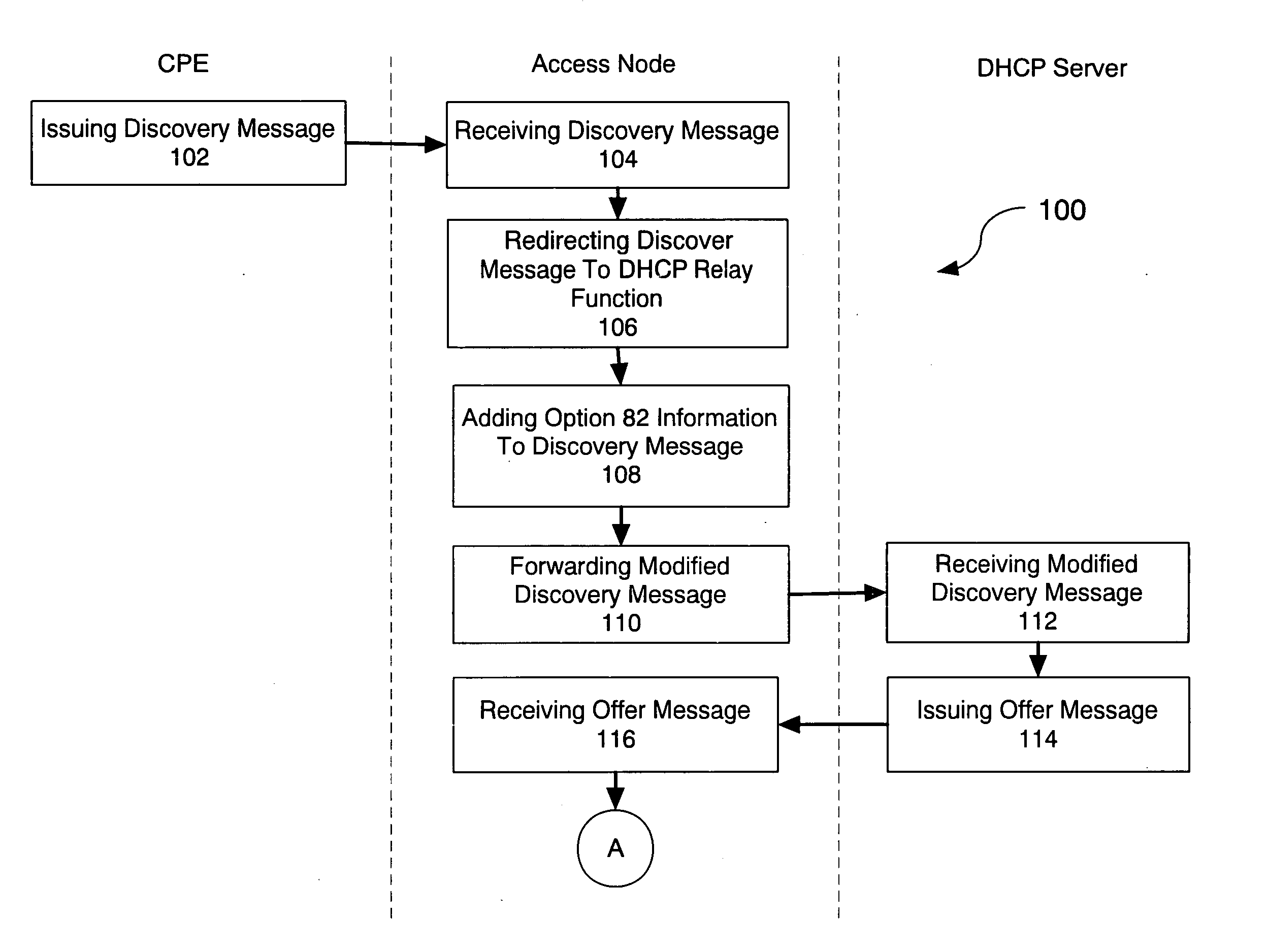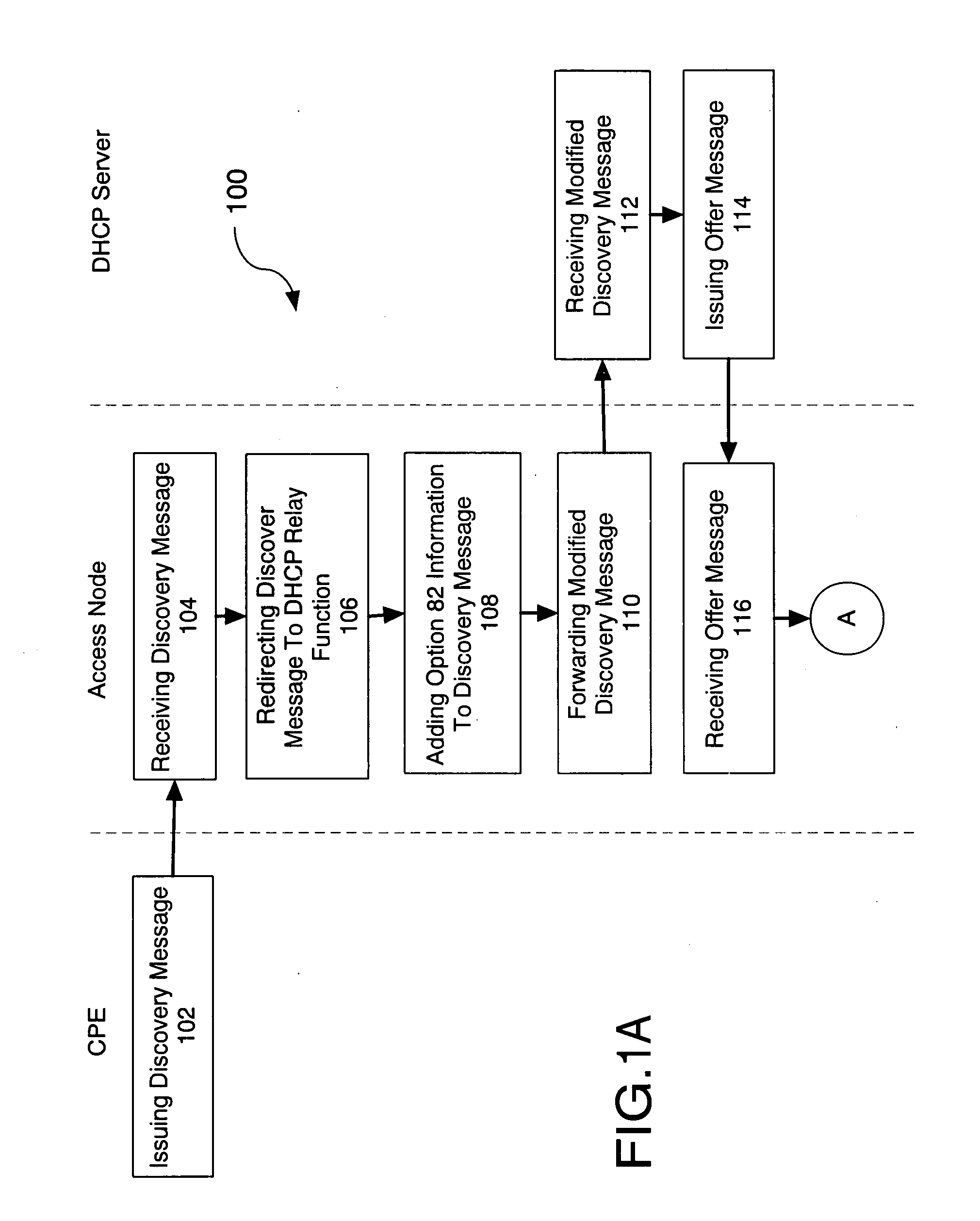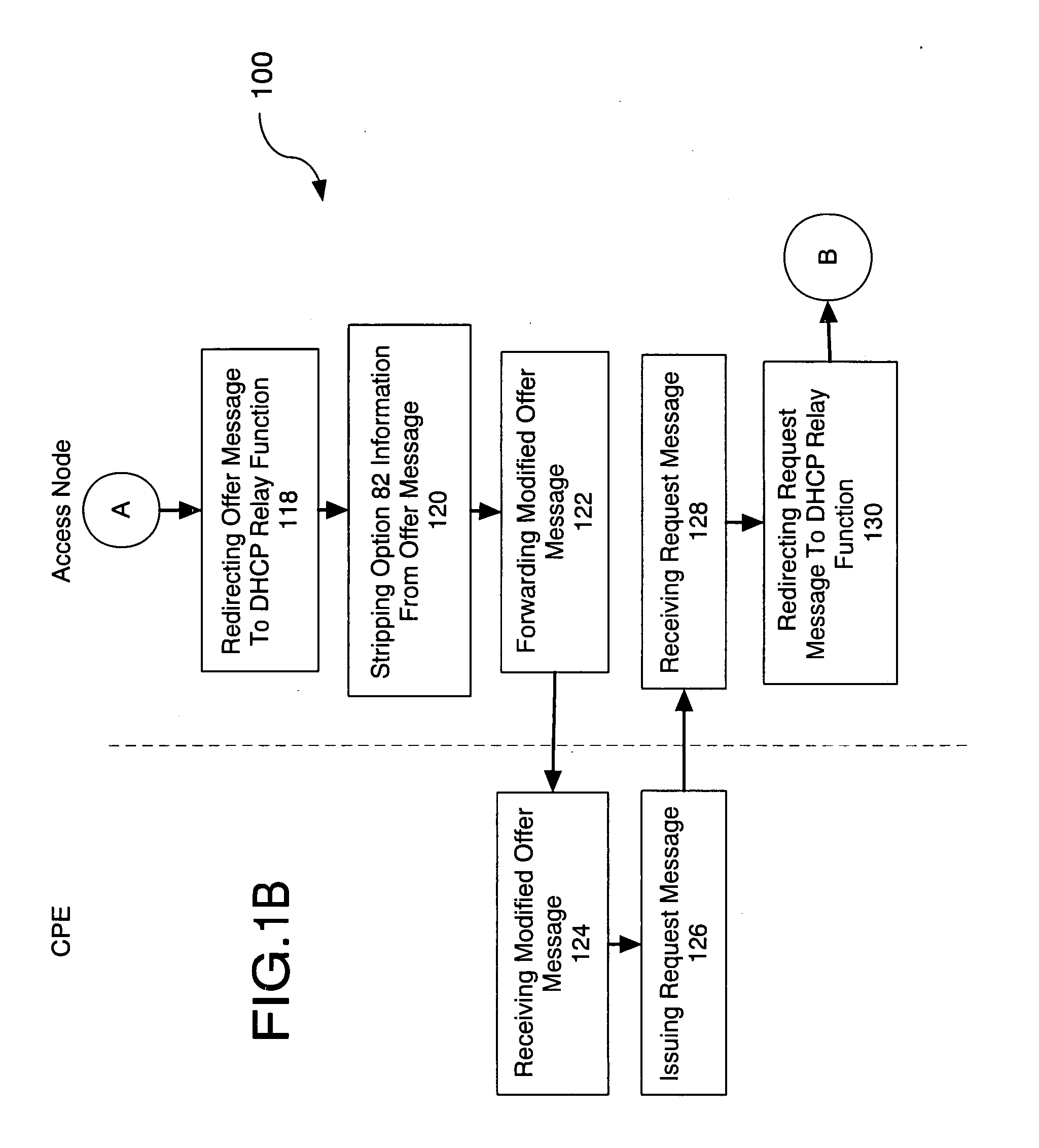Method and system configured for facilitating residential broadband service
a technology for broadband service and residential broadband, applied in the field of data communication, can solve the problems of limited addressability of conventional approaches to provide residential routing functionality, and achieve the effect of facilitating residential routing functionality and improving security
- Summary
- Abstract
- Description
- Claims
- Application Information
AI Technical Summary
Benefits of technology
Problems solved by technology
Method used
Image
Examples
Embodiment Construction
[0032] Facilitating residential routing functionality in accordance with the present invention includes suitably configuring an access node through which such residential routing functionality is facilitated. In one embodiment, being suitably configured includes designating a VLAN (virtual local area network) identifier of the service VLAN, enabling Proxy ARP (address resolution protocol) function for the designated VLAN, creating a VLAN specific IP (Internet protocol) forwarding table, creating a respective static route for all upstream traffic to point to a particular service edge router, providing suitable subscriber management, configuring DiffServ (Differentiated Services) marking rules and implementing connection profile configured for subscribed users to create a PVC (permanent virtual connection) from CPE (customer premise equipment) to residential routing delivery point in access node. Where residential routing functionality is being set-up to allow for user auto-configurat...
PUM
 Login to View More
Login to View More Abstract
Description
Claims
Application Information
 Login to View More
Login to View More - R&D
- Intellectual Property
- Life Sciences
- Materials
- Tech Scout
- Unparalleled Data Quality
- Higher Quality Content
- 60% Fewer Hallucinations
Browse by: Latest US Patents, China's latest patents, Technical Efficacy Thesaurus, Application Domain, Technology Topic, Popular Technical Reports.
© 2025 PatSnap. All rights reserved.Legal|Privacy policy|Modern Slavery Act Transparency Statement|Sitemap|About US| Contact US: help@patsnap.com



